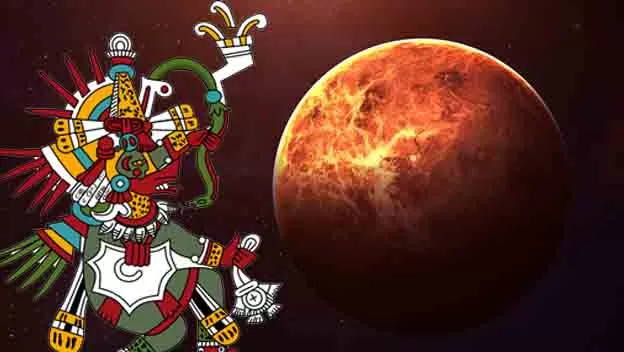Venus, the most studied planet by the Maya

The planet Venus was extensively studied by the Maya and holds significant symbolism and importance in their culture.
For the ancient Maya, Venus held a level of importance similar to that of the Moon and the Sun.
Venus in the Dresden Codex
The Dresden Codex is the first book discovered in the Americas. It originates from the Maya culture, and many researchers agree that this text showcases the importance and relationship of Venus with the Maya. In fact, after the Sun and the Moon, Venus is the most significant celestial body for this ancient culture.
This fascination is due to various factors, primarily that Venus is the brightest object in the sky, visible after sunset and just before dawn. It’s the second planet from the Sun, and its transit holds symbolism of ominous omens or warnings of drought and destruction.
The Maya referred to it as “Ahzab Kab Ek,” the star that awakens the Earth, and “Noh Ek,” the great star, linking its appearance and disappearance in the sky to Kukulkan, one of the creator deities of humanity according to the Popol Vuh, represented as a feathered serpent.
This connection led them to construct pyramids, observatories, and steles in honor of the planet, such as the Temple of Venus in Chichen Itza and other structures from which they methodically observed its movements, recording its transit in the nighttime sky with unprecedented accuracy for that era.
Returning to the Dresden Codex, within this manuscript, the Maya calculated the cycle of Venus—the time it takes to return to the same point from which it was originally observed from Earth’s perspective. They also related its appearance and disappearance in the cosmos to eclipses and the agricultural cycle.
This is known as the synodic cycle of Venus, consisting of 583.92 days, but the Maya calculated it as 584 days. It’s directly related to an 8-year count, containing 2,920 days, the same as five synodic cycles.
Mayan beliefs
The Maya also associated Venus with fertility and the character of Kukulkan as a thunder god. Every spring, the Maya confirmed the meeting of Venus and the Pleiades (a star cluster located in the Taurus constellation), which heralded the arrival of the Chicchan, a group of serpent spirits that brought rain with their rattles and inaugurated the agricultural season.
So, for the Maya, Venus governed the spiritual and material life of their culture. They found answers about the world, and the Dresden Codex is one of the first scientific documents that discuss the movement of this celestial body. The codex’s illustrations show a record based on numerology and a breakdown of centuries of periodic observation, including its relation to eclipses.
Although the Maya did not have a deity specifically linked to Venus but rather a collection of deities for different aspects of this planet, as if it were a collegial entity. In fact, they believed that Venus “hid” in the underworld (a place filled with death, disease, and misfortune) and that its first rays of light were feared when it emerged, as it was thought to bring bad omens.
Among the gods associated with the planet is “Ha?al Ihk? Mam Chak Ek,” which roughly translates to “black grandfather of rain.” This figure personifies Chak Ek, the great star. However, the primary deity associated with this celestial object was “1 Ahau,” referring to the first appearance of the morning star.
Specialists agree that nearly all the omens seen in the Venus table of the Dresden Codex refer to misfortunes for humans, corn, and water. Many signs can be interpreted as droughts, plagues, and calamities for cities.
In contrast, it’s interesting that Venus remains one of the most fascinating planets in the Solar System, named after the Roman goddess of love and beauty, known as Aphrodite to the ancient Greeks.
